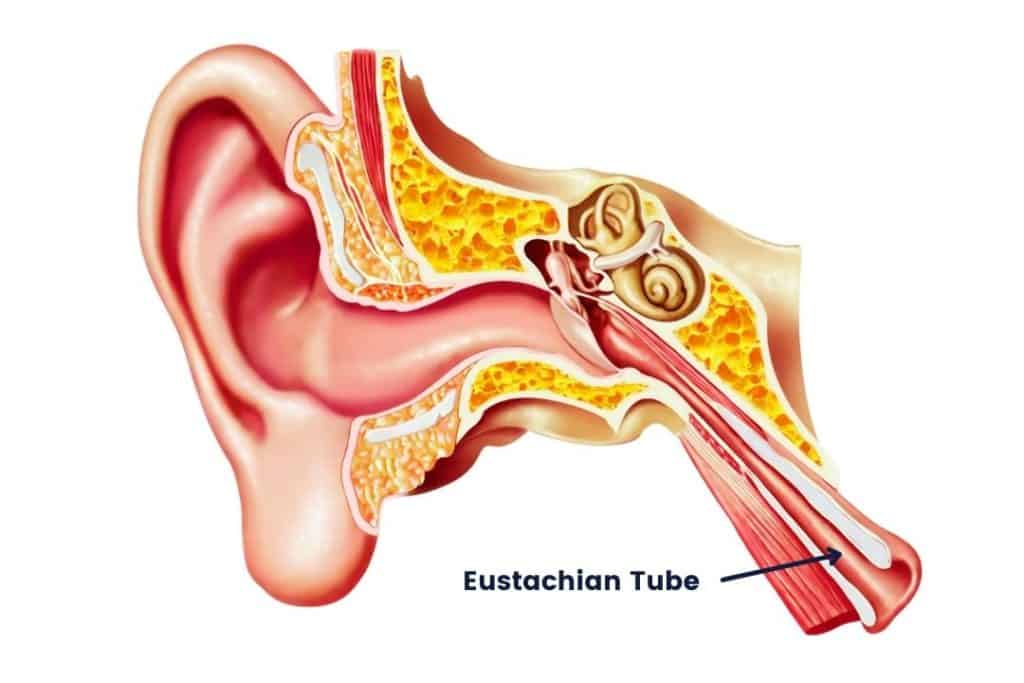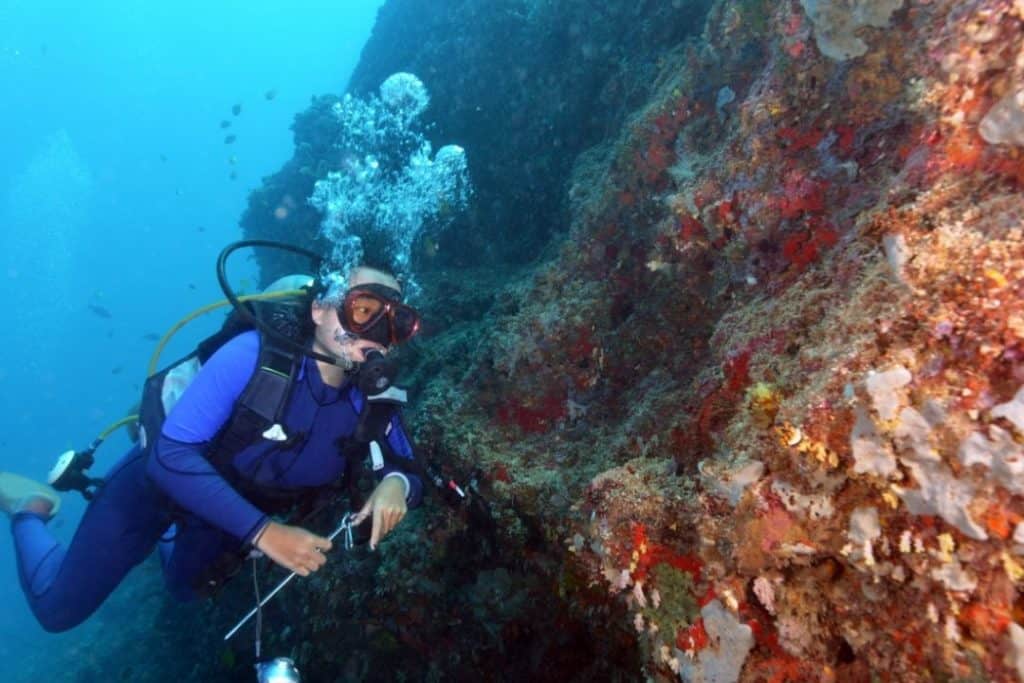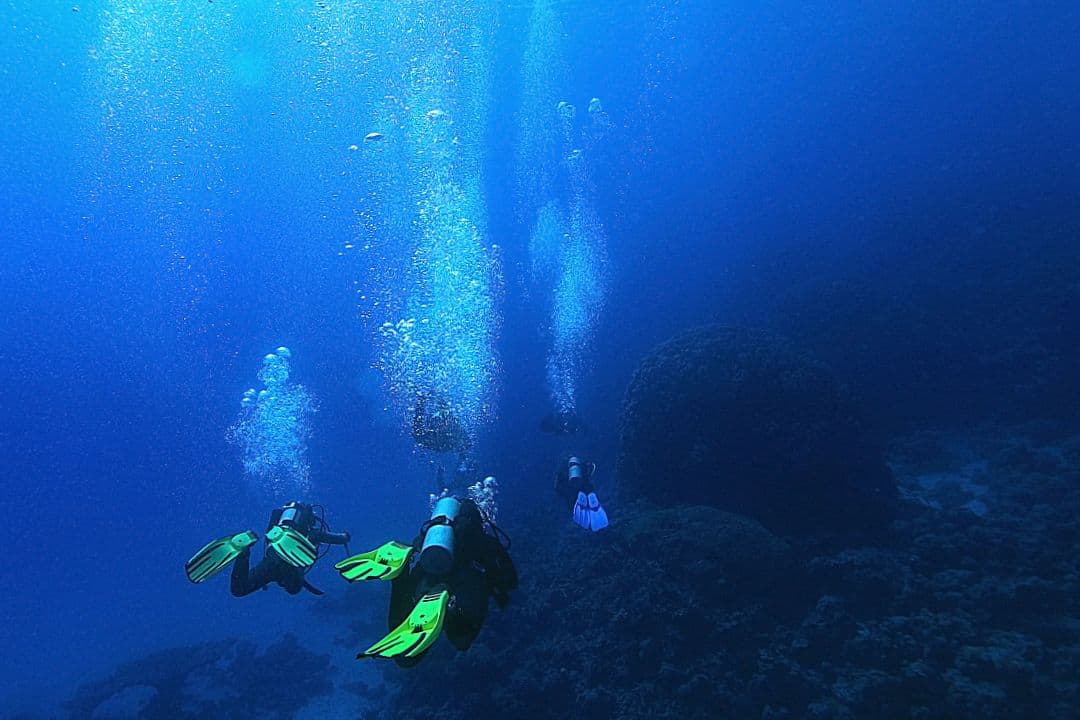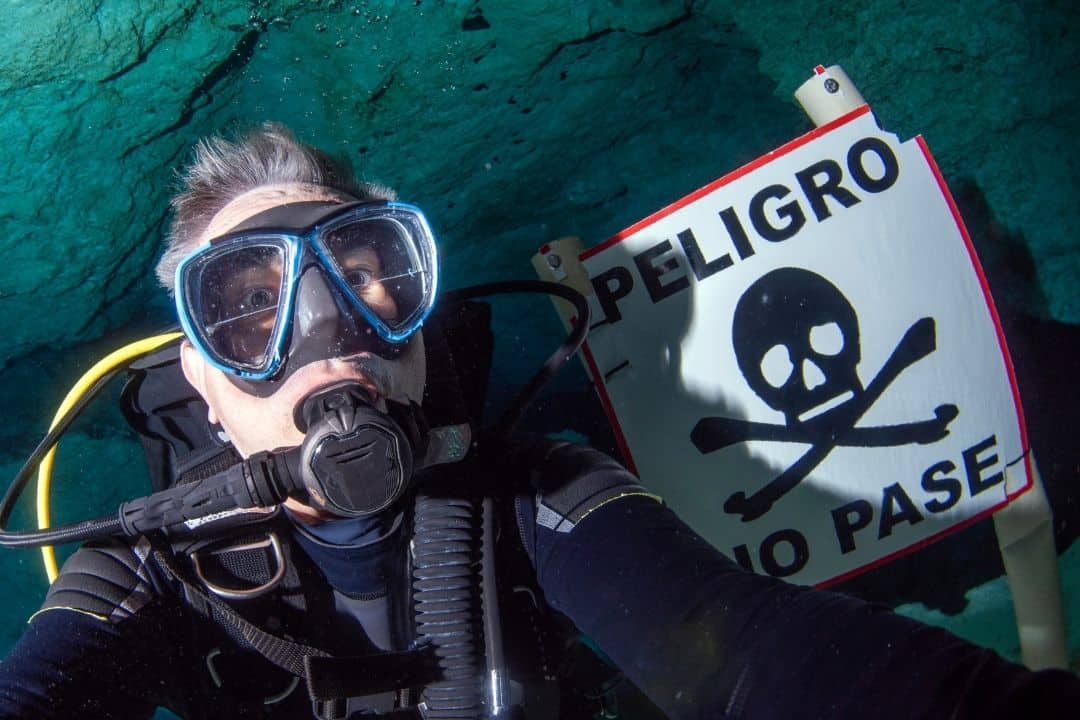Equalizing ear pressure while scuba diving is a task every diver must master. To function properly the pressure on the outer ear which is exposed to the environment should be equal to the pressure in the airspace of the middle ear.
The normally closed Eustachian tubes provides a passage way for air from the throat to the middle ear airspace.
Hundreds of times a day, our body will automatically open the Eustachian tubes allowing the two spaces to equalize.

There are times, such as when scuba diving or flying in an airplane, when there is a rapid change in pressure and the natural process does not happen fast enough.
The difference in pressures can cause the natural methods to fail. When this occurs we will experience pain in the ears and if it is not corrected, may lead to a ruptured ear drum.
A number of methods that can be used to for equalizing ear pressure while scuba diving. The two most common ways to clear while diving are the Valsalva Maneuver which is a blowing method and the Frenzel Maneuver which involves the tongue.
Other similar methods use swallowing or jaw movements.
Equalizing Ear Pressure While Scuba Diving Using The Valsalva Maneuver

The Valsalva Maneuver seems to be the one that every scuba diver is taught how to do. It may not be the best and it may present some troubles but it is the easiest for most people. You simply pinch your nostrils close and exhale or blow out through your nose.
This results in a build up of pressure in your throat that will open the Eustachian tubes. The open tubes will allow the pressure of the middle ear to match that of the outer ear.
The medical community warns that if you use too much pressure when you blow out, you could over pressurize the middle ear airspace causing some damage.
Another concern is that the pressure difference could have the wrong impact by forcing the soft tissue to firmly close instead of opening.
Using The Frenzel Maneuver
The Frenzel maneuver was developed prior to WWII by the German ENT doctor, Hermann Frenzel, for pilots of dive bombers.
It allowed them to rapidly and repeatedly clear their ears during a steep dive. You basically close the airways going to the larynx and lungs, then using your tongue, throat and facial muscles to compress the air in those spaces.
This compressed air opens the Eustachian tubes. This method is much safer and requires less effort than the Valsalva Maneuver.
It does take more effort to learn how to do it.
Today, it is the favorite method of many freedivers as it uses very little air and is easy to repeat if needed.
These are the basic steps to complete this maneuver. You may need more details and practice before you can fully do this task.
- Have your mouth full of air without overextending your cheeks
- Block the escape through your nose by pinching the nostrils. Please note if you are practicing this on land, do not fully close the nose.
- Seal off the lungs
- Use the tongue to block the mouth exit.
- Tighten the cheeks while repeatedly moving the tongue upwards and backwards.
- This will increase the pressure in the mouth and throat and cause the Eustachian tubes to open.
Here are a few things you need to explore and practice before you can do this.
- Practice breathing only from your nose and only from your mouth and learn the position of your tongue for each. You may find that when breathing using the nose only, the tongue is in a position similar to when you make the sound “t”.
- Learn to control your epiglottis. It might take some practice, but it is the same thing you do when you are gargling with mouthwash. You do not swallow the mouthwash and it does not go into your lungs.
Backup Methods to Equalizing Ear Pressure While Scuba Diving.

While the Valsalva Maneuver and the Frenzel Maneuver are the most commonly used there are similar methods that are also used. It is good to know other methods to use if your primary choice just does not seem to be working.
- Toynbee Maneuver: to accomplish this you just pinch your nose closed and swallow. Swallowing is the most common method your body automatically uses. There is no risk of over-pressuring the middle ear with this method and it does not require any skills to learn. Many divers are able to equalize just by swallowing, This is helpful when your hands are busy with other task like photography.
- Voluntary Tubal Opening. This is another hand free method that mimics what the body does automatically. You tense your throat and push the jaw forward and down. Much like a yawn.
- Edmonds Technique. This is a combination of the Tubal Opening and the Valsalva Maneuver. You position your jaw while doing the Valsalva Maneuver.
- Lowry Technique. This is another combination with the Valsalva Maneuver. This time with the Toynbee Maneuver.
Tips for Better Equalizing Your Ear Pressure

Some people are able to equalize better than others. There are many things that can impact your ability to equalize, and they may not be apparent.
You may be fine on one dive and have difficulties the next. If you are unable to equalize do not ignore it nor force it. Here are a few tips to keep in mind.
- In the time leading up to your dive, equalize often. Swallow or use the Voluntary Tubal Opening method to loosen up the muscles around the tubes.
- During your decent, equalize often and before you need to. The greater the pressure differences between the outer and middle ear the harder it will be to equalize. Frequent gentle equalization is best.
- If you are having difficulties equalizing, stop your descent until you are able to do it. If you are still having difficulties ascend a few feet to lessen the pressure and try again.
- It is easier to equalize in a feet down position than a head down position.
- Never dive with a cold or nasal congestion. This will hamper your ability to clear your ears.
- Do not take decongestants before a dive. They do wear off.
- Aborting a dive because you can not clear your ears, is the right thing to do. It will happen to every diver at some point.
Conclusion
Every day, our ears are frequently equalizing. We might even notice a pop in the ears now and then.
When we are scuba diving, we might just need to take action before the body does it itself.
If you are a novice diver, practice a few means to keep your ears clear, and remember the tips above. If you have any additional tips, feel free to leave a comment.


